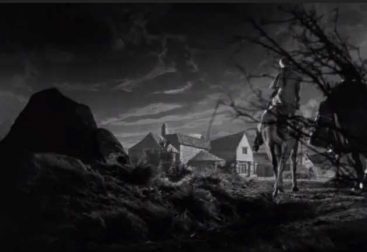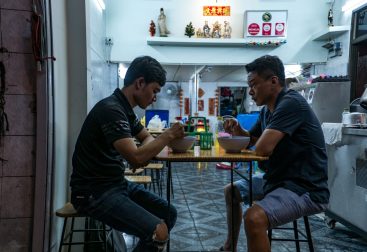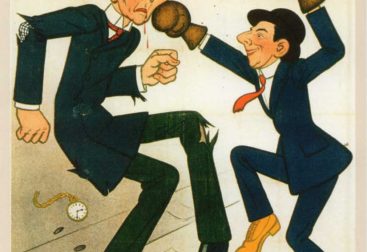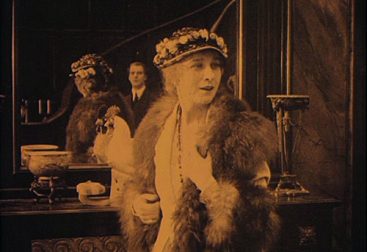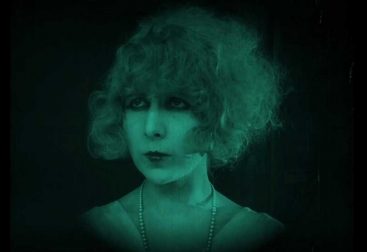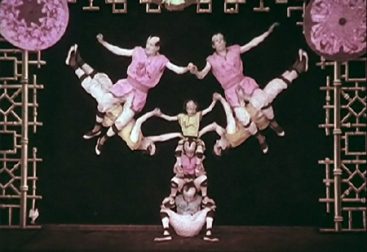In these last months I have been starting to see my laptop, which is constantly on my desk, in my flat, in Germany, as a sort of timeless and spaceless shuttle: as I sit here, I can suddenly get teleported to an academic conference in a city far away from here, to a meeting with friends in virtual realms, or even to a Film Festival, as I already reported here on “Sinn und Cinema” for the Giornate di Pordenone 2020 .
Today, my laptop-teleport brings me to the FEFF 2021 – Udine Far East Film Festival 2021. Actually, the Festival already started a few days ago, but I have decided to simply buy the “Web Carnet”, for several reasons: first, this week I have much work to do, therefore time is not enough to really enjoy more than one film per day and, also, I have seen that there is a significant amount of “live talks” within the FEEF, so I plan to listen to most of them as well. Then, contrarily to the last year edition, the FEFF is now broadcasting films also outside of Italy! Indeed, if you have a look at the program, you can see tags such as “Italy only”, “Europe only”, “Worldwide” – occasionally with quite odd exceptions. Last but not least, I really appreciate to be able to somehow access the Festival from abroad, but I must say that I do not fully enjoy watching several films per day from the small screen of my laptop… So, here we are, web-carnet of 4 films. But how to choose 4 films over the 64 in program?
The catalogue and the websites give some help in this direction, for one can browse the films either per day, per section, per country or genre. Unfortunately, one can’t filter the extension (Italy/Europe/World), so this must be taken into account constantly while selecting the films. So, first I erase all films “Italy only”, which to my very big disappointment seems to coincide with at least all South-Korean ones and most of the Japanese ones… Then, for pure sake of personal taste, I will not consider genres such as ‘horror’, ‘comedy’, ‘musical’ and ‘documentary’, deliberately heading to ‘drama’, ‘thriller’ and ‘noir’. Of course, before erasing a film I am also reading the plot and checking e.g. director and stars. This first selection leads me to less than half of the films – still far from having 4 titles. The next steps are the countries and the year, because I would like to privilege films from 2020-2021. Finally, the plots: in this sense the FEFF helps a lot with providing lovely micro-descriptions next to each film. Crossing all these criteria, here are the winners of my selection:
- “Money Has Four Legs”, SUN Maung, cinephile dramedy, Myanmar 2020
- “Hail, Driver!”, RAHMAN Muzzamer, lonely souls in Kuala Lumpur, Malaysia 2021
- “Hand Rolled Cigarette”, CHAN Kin-Long, elegant crime, Hong-Kong 2020
- “Like Father and Son”, BAI Zhiqiang, tear-jerking road-movie, China 2020

28 June 2021 – Approaching Myanmar with Wai Bhone in “Money Has Four Legs” (Sun, 2020)
My day starts with a couple of extremely interesting talks. Since the first one is about Myanmar, I decide to start with this one in between the four I chose. I like the idea of giving space to a country, a reality and a topic that I am absolutely not familiar with. In fact, the contemporary socio-political situation in Myanmar is one of the focuses of this FEFF 2021. As also pointed out by European Ambassador in Myanmar in the interview, the issue is being very much neglected by the so-called West which, according to journalist D’Emilia, could definitely do much more to denounce the current devastating situation in Myanmar. In this sense, I appreciate a lot the engagement of the FEFF.
The film goes straight to the point from its very beginning, focussing on film censorship. Basically, our protagonist is working on a film that has to be completely revised and adapted to what the producer (meaning the government) wishes to see. The film clearly mirrors the personal experience of the director, Maung Sun, who also confirmed this during the aforementioned interview. As a consequence, the film intertwines not only two, but three stories on different narrative levels: that of the fictional protagonist of the film, Wai Bhone, a young film director who is trying to outdo the path of his esteemed father, a renowned Burmese director. That of the film he is directing, a remake of a famous Burmese gangster film from 1940, already object of many other successful remakes; and that of the director of the film itself, which clearly serves as inspiration to the plot, though without being autobiographical.
The concrete connection between fictional and real history seems to be confirmed by the limited accessibility of the FEFF: The film is available worldwide “except in the UK, France, Switzerland, Myanmar, the USA, Australia”. If one considers that the film premiered at the FEFF, it is quite striking that nobody can see it in its country of origin, Myanmar (and of course it would be interesting to know the reasons why in the other countries it cannot be seen). It just could not find company that took the risk of showing it?
Since I am (was?) definitely not familiar with Myanmar, especially with its culture, the film had an extremely strong influence on me, so that after I finished it I felt like searching some details more closely. For example, why some people (women?) paint a yellow shape on their bodies? What has Wai Bhone baked with so much care? Are the events we see in the streets a festival, a ritual, or a party? And what about the long dresses men wear? Altogether, many elements of the film seem “foreign” and unknown to me, which leads me to believe that the film’s setting is truly authentic, and that maybe this was done on purpose. Of course you can find such elements in every film, but here you really get the impression that there is an intention behind their representation throughout the film. The most important consequence of this is that “Money has four Legs” leads oneself to identify with the protagonist and his environment even from the laptop at home. As we watch it, we gradually learn that the young filmmaker, his wife and daughter are a wealthy, cultivated family: they live in a fancy street where all the film producers are located; they can afford television, electricity and water. The house is also full of books, we see “1984” in particular, and the child is watching the cartoon version of “Animal Farm”. And yet, their lives are very unstable economically, so they reach the point to leave their house and rob a bank (probably the most non-violent bank robbery in cinema history).
When watching a film so distant from myself (in many ways), I spontaneously look for cultural specificities and tend to focus on those rather than on familiar tropes and issues, and this strongly influences my cinematic experience. For instance, the tough reality that the young director had to face was not that foreign to me. By this I mean that the director might not have succeeded in displaying the specificities of the Myanmar’s reality in this sense – or, perhaps, censorship and authority simply have similar traits in different parts of the world. On the other hand, director Sun succeeds in displaying Myanmar’s specificities in terms of traditions, daily life, human relationships, moral values and, last but not least, in terms of landscape and urban scenario – even though this was probably not the main goal of the film.

29 June 2021 – Exploring KL, Malaysia, while driving with Aman in “Hail, Driver!” (Rahman, 2020)
The question I left open yesterday led me to choose the film for today, a film that appears to focus on quite a different societal environment. The first thing I would like to mention about “Hail, Driver!”, is that it is in black and white. I know that many would argue that contemporary black and white make any film beautiful and that many artists choose it to spare on technical issues. This might be true sometimes, but for sure it is not the case with this work, director Rahman’s first film. The aesthetics of most scenes is wonderfully captivating because of the way they are thought, built, framed. The skyscrapers, the multilevel bridges and the beehive-housings typical of the KL metropolitan landscape are particularly highlighted by the visual contrast. Also, the director justifies his choice in a quite peculiar way: Aman, the protagonist of the film, is colour-blind and sees the world in black and white, he says. Realistic or not, this choice makes the photography one of the strongest aspects of this work. The first scene might work as an example for many others that follow: at the beginning of the film, in fact, the audience is given a quite peculiar persepctive, because in a few seconds we understand that… we are in a grave. The first point of view offered to the audience is that of the bottom of a tomb in a cemetery. Although this might sound a bit macabre, the director’s visual and narrative touch is strong from its very beginning: there are no dialogues, the scene is short, and afterwards we immediately leave the cemetery. And still, what we intensively perceive in this elegantly built scene is not a macabre feeling, but rather a suffocating, claustrophobic sadness.
This feeling will remain throughout the whole film. But Aman’s sadness will not be the only one. Aman, a Malysian young man who just lost his father, also looses his house due to a bossy landlord. Recently, we understand, he lost his job as a writer too, because, as he says “people do not read magazines anymore”. KL is a highly modernized urban environment where technology and circulations reign. The only hope given to Aman in this situation comes with the new (illegal) job he manages to get: an e-hailing driver for the taxi-app “Toompang”. Thanks to this job he gets to know Bella, a Chinese student doing a major in international management, who hires him as a sort of personal driver to move faster from one hotel to another: when Aman asks what she does as a job, she simply says “I think you know what I do”.
The two lonely protagonists will bond immediately, and Aman will eventually become her flatmate. There is barely any allusion to a romantic connection, though one can feel that the two get closer and closer, even forgetting their different origins. In fact, that of the nationality, or even of the regional origins, is quite a relevant topic, for we understand that Malaysians and Chinese don’t often get along. As in many other famous taxi films such as Taxi Driver (1976, Scorsese) or Taxi Tehran (Panahi, 2015), the car of Aman becomes a filter between the main character, the urban space, and the audience. We get to meet many different people, from tourists, to business men, to migrants coming from Indonesia eager to find a better life in Malaysia. Most of them speak different languages. Even Aman and Bella interact in a curious way, he speaks in Burmese and, most of the time, she answers in English. Also, Bella does not come from the province of Kuala Lumpur and she stresses very often how she feels a foreigner there, how she would like to find a place to call “home”.
“Hail, Driver!” deals with dramatic issues and desperate stories with a very delicate touch. It does not dig too much into them, though never resulting superfical. Most importantly, it leaves the audience with an optimistic sense of hope, for even an alienating urban environment can eventually turn out to be our “home”. But, first, one needs to find good human connections, regardless of the of origins of the persons involved.

01 July 2021 – Hiding with Kwan and Mani in “Hand Rolled Cigarette” (Hong-Kong, 2020)
Continuing in the direction of intercultural interactions, also “Hand Rolled Cigarette” offers a great opportunity to explore them as well, though this time we deal with a much more troubled encounter: that of British Hong-Kong ex-soldier Kwan Chai and young South-Asian thief Mani (whose origin is never specified, if I am not mistaken). Moreover, from the very beginning we get familiar with some turtles’ smugglers from Taiwan, so in the end there are at least three different cultural backgrounds interacting with each other, clearly in a conflictual mind set: for instance, Kwan insists in calling Mani “brownie” because of the colour of his skin, somehow refusing to acknowledge his identity, or at least ignoring it. After all, Mani ends up in his place by accident while hiding from some members of the Triade who are looking for the many kilos of drugs he and his cousins have just stolen, which for sure does not foster Kwan to respect him in the first place.
For the record, I had to google what the “Triade” stands for: according to Wikipedia, “it is a Chinese transnational organized crime syndicate based in Greater China with outposts in various countries”. From the film we understand that they have a strong hierarchic structure and intricated network. Kwan is a member of the Triade, though the film shows quite directly that he is not the typical heartless criminal. As Placereani puts it in one of his interviews for the FEFF on gangster movies, what is common to the gangster genre is that there is a “code of honour” which is lost (or never existed) and is now pursued again by the tormented protagonist. In this sense, and specifically because of the casual bond with young, desperate, but good-hearted Mani, this film reminds immediately of “Léon: The Professional” (Besson, 1994), of how Léon and Mathilda create that special bond and, despite their being apparently incompatible, eventually help each other even more than expected. They (re)find themselves and avoid to fall in the void of their lives. Something similar happens in this Hong-Kong neo-gangster film, very well inscribed in its cinematographic tradition.
Today I also discovered more about the films labelled as “White Mulberry Award for First Time Director Competition”: apparently Hong-Kong has this program called First-Feature-Film to foster the emergence of new young film directors, so this became a thing also within the FEFF. To my surprise, all four movies I selected are competing for this price. As pointed out by Tim Youngs during his online interview for the FEFF, “Hand Rolled Cigarette” has very good chances: although it was produced with a very low budget, it is extremely well done, good looking and balanced over dark nuances, thus totally deserving the “neo-noir crime drama” definition. When Mani sneaks through the labyrinths of the buildings of the city, the lack of light and space is very well expressed. Once again, we move in between these housing-labirynths, to which the average European viewer is definitely not used. One can feel how the density of people gives back a claustrophobic sentiment, though very differently from the feeling I already got with the film I watched yesterday, “Money Has Four Legs”. Mani, and Kwan with him, are practically hiding, though what they are actually looking forward to is the possibility to escape, to leave their current life behind and start all over. But redemption must come first. And, in the end, they do achieve their respective goals of redemption, though each one in a different, self-reflective way…
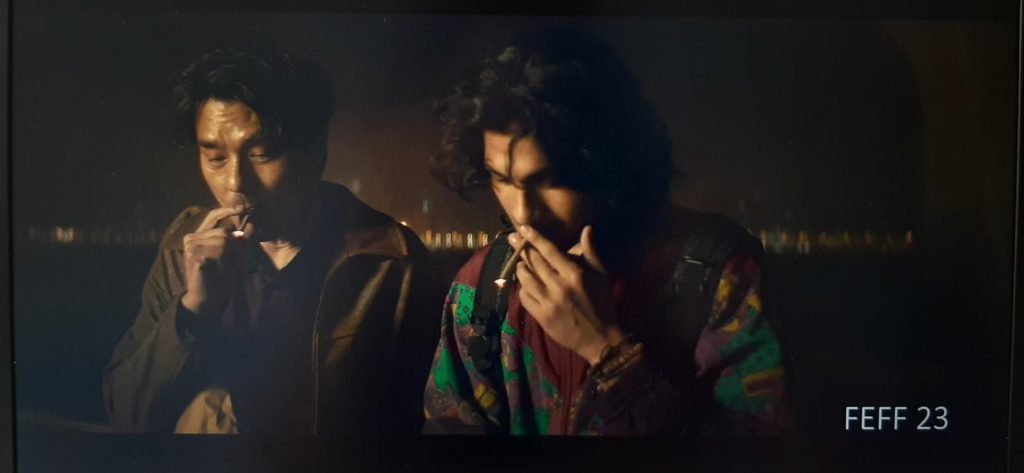
02 July 2021 – Finding family in the heart of China with Madou and Guoren in “Like Father and Son” (Bai, 2020)
The film I left for the last day of the Festival is a truly heart-breaking one. As the director himself stated in his introduction to the projection, he got inspired by Italian neo-realism. For sake of realism, the actors are not professionals, nor they speak Mandarin: both actors are at their first performance on the big screen and they both speak the local dialect of Northern Shaanxi, a north-central province of China which is famous worldwide for its Terracotta Soldiers. What is definitely realistic, aside the language, the actors and the locations, is also the sound: the director privileges what Michel Chion has called “ambient sound”, so that spaces and situations are mostly constructed through their noises, rather than accompanied or stressed by superposed soundtracks. Darunter versteht Chion, Räume und Situationen meist durch ihre Geräusche zu konstruieren, und sie nicht mit überlagerten Tonspuren zu begleiten oder zu betonen. Even during the night, for instance, one can feel the depth of the dark and cold space thanks to the few, vivid, isolated steps of the characters – carefully contrasted by intense moments of pure cinematographic silence. But this film is essentially about emotions, for our protagonists both lost their families, though from complementary perspectives: Madou is a child around 10 years old, his parents abandoned him in an isolated village in the countryside, his beloved grandmother takes care of him with much love at the beginning, but time passes… and so do people. Guoren is a man in his fifties or so, he sells merchandise in the area nomadically moving with his track, and we progressively understand that he has lost his child, who must have been just a bit older than Madou.
Grumpy Madou and clumsy Guoren will end up searching for the former’s father together: at first, Guoren is not helping him for noble reasons, for he is just looking for somebody who can repay him his stuff on behalf of the child, who accidentally ruined them. As one can obviously expect, the two end up bonding despite their initially hostile attitudes. Spending time together, they eventually understand that they have much more in common than what they could have imagined: both do not fit well with their acquaintances and have been somehow marginalized; both tend to react to hardship with hostile stubbornness and, especially, they both lost their beloved ones. As a consequence, they are now feeling lost, homeless. Their encounter is complementary until the end: thanks to their shared travel and the several misadventures, Guoren will end up overpassing his grief after a lifetime struggle, while Madou, still young and full of juvenile hope, will end up grasping how tough life can be, but also that one can deal with it. A double-sided human lesson that does not spear us a truly heart-breaking ending, in between tears of sadness and commotion.

From intercultural encounters, to urban imagery and socio-political issues, my FEFF 2021 has been a highly stimulating cinematic experience (despite the online format!): the further a country is from one’s culture (geographically, linguistically, mentally…) the more one can learn through its films with regard to aesthetics, content, and culture as well. The best thing for me, is that I am left with even more curiosity towards “Far East Asia” than before the Festival – a perfect incentive to further cross-cultural viewing and learning.
Top image: “Udine FAR EAST FILM Festival” Facebook Page


